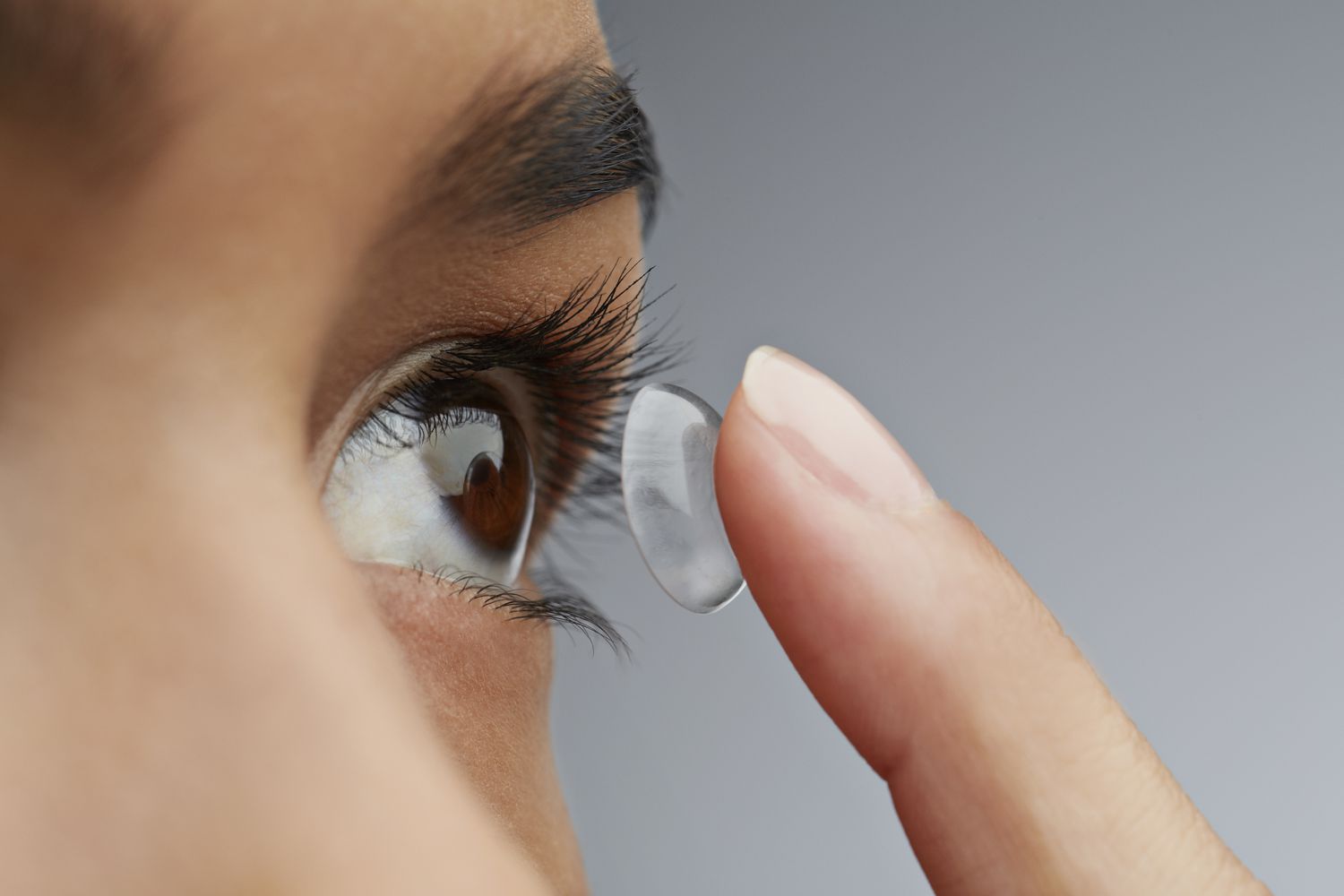Is It Safe to Keep Your Contacts In While Showering? Experts Weigh In

Wearing contact lenses can make everyday activities less of a hassle for people who wear glasses—but can showering with your contacts in put your eye health at risk?
On July 18, Instagram influencer Rachel Prochnow shared with her followers that, last year, she went blind in one eye after developing an infection caused by showering in contact lenses. She had to undergo a cornea transplant to restore her vision.
Prochnow said she developed Acanthamoeba keratitis—a rare but serious eye infection caused by an amoeba commonly found in water and soil—while showering in Austin, Texas. Her post warning people about the condition garnered over 950,000 likes on Instagram.
“Acanthamoeba is in every water source (except boiled water). So you’re [at] risk if you are wearing contacts and water gets in your eyes,” she wrote. “It was the most pain I could ever imagine.”
In her post, Prochnow said she thought she was practicing good contact lens hygiene—she washed her hands before handling her contacts, never slept in them, and frequently replaced her contacts case. However, she said she had never been cautioned by doctors not to shower, swim, or go in a hot tub while wearing her contacts.
“Even if she cleaned her lenses as recommended, exposure to tap water—which can harbor Acanthamoeba—might have led to contamination,” Annie Nguyen, MD, assistant professor of clinical ophthalmology at Keck Medicine of USC, told Health. “The organism can adhere to the lens surface and cause infection, particularly if there was any damage to the corneal surface, creating an entry point.”
Here’s what ophthalmologists had to say about the risks associated with showering in contacts, how the practice can lead to eye infections, and other tips contact lens wearers should know to keep their eyes healthy.
Water—whether from the shower, tap, or swimming pool—can contain harmful microorganisms, including Acanthamoeba. And anybody can get an eye infection when this contaminated water gets into their eye, which can happen while showering, swimming, or spending time in a hot tub.
However, contact lens wearers are at a particularly high risk.
“These organisms can adhere to the contact lenses, and the lens can trap them against the cornea, increasing the risk of infection,” Nguyen explained. “The contact lens also disrupts the natural tear film, which normally helps to protect the cornea, making the eye more vulnerable.”
When Acanthamoeba or another harmful microorganism does get into the eye, it can cause keratitis.
“Keratitis is the most common eye infection from wearing contact lenses. It is when the cornea—the clear, dome-shaped window of the eye—becomes infected. In some cases, it can scar the cornea, affecting your vision,” Ami Vadada, MD, an ophthalmologist at AdvantageCare Physicians in New York, told Health.
In the case of Acanthamoeba keratitis specifically, it “can cause significant pain, vision loss, and even blindness if not treated promptly and appropriately,” Nguyen added.
Beyond Acanthamoeba, people can also develop keratitis from bacteria such as Pseudomonas, which can also be found in soil and water. It’s also possible that someone could develop a fungal eye infection from contaminated water, though this is very rare.
It’s possible for a person to develop keratitis anytime they shower; however, certain factors can influence the risk of eye harm, according to Nguyen:
In addition to the risk of keratitis from showering or swimming, wearing contact lenses can be associated with several other eye conditions.
According to Nguyen, these include:
“These conditions can lead to lasting eye health issues and, in severe cases, blindness if not treated properly,” she explained.
In general, contact lenses are considered a safe and effective tool to correct vision—however, to avoid Acanthamoeba keratitis, dry eye, and other issues, it’s important that people wear them safely.
According to Vadada, that means avoiding these potentially dangerous habits:
It’s also crucial to wash your hands before handling lenses, as clean hands prevent the transfer of bacteria, said Nguyen.
The most important thing you can do when wearing contacts—whether you’re a newbie or long-time wearer—is to follow directions from your doctor, contact lens manufacturer, and the lens solution manufacturer to ensure you’re properly cleaning and storing your lenses.
“If you store your lenses in the case for a long time, read your instructions to see if you should re-disinfect them before wearing them,” Vadada explained. “Never wear your contact lenses if they have been stored for 30 days or longer without re-disinfecting.”
It’s also a good idea to keep up with your eye exam appointments, experts agreed.
"Contact lenses can warp over time, and your cornea can change shape," Vadada said. "To make sure your lenses fit properly, and the prescription is right for you, see your eye doctor regularly."
Plus, if you notice any potentially worrisome symptoms—including redness, pain, or blurry vision—contact your eye doctor immediately, added Nguyen.
Though taking out your contacts before showering or swimming may not be ideal, it’s a good precautionary step to make sure you’re keeping your eyes healthy. There’s no perfect solution, but for those with strong prescriptions who rely on their contacts to see, "keeping a pair of prescription glasses in the bathroom for temporary use can be helpful," Nguyen said. "Alternatively, they could use daily disposable lenses and dispose of them after the shower. Some people opt for special shower goggles designed to keep water out."




